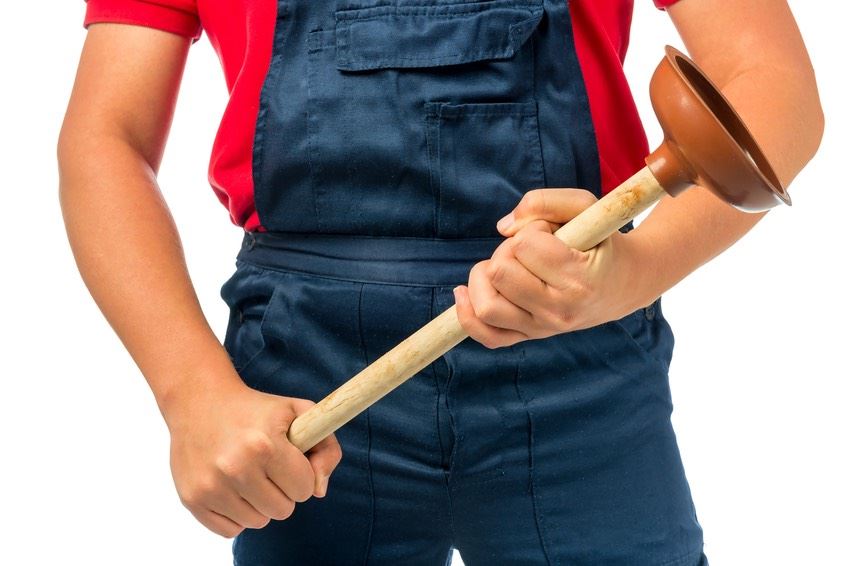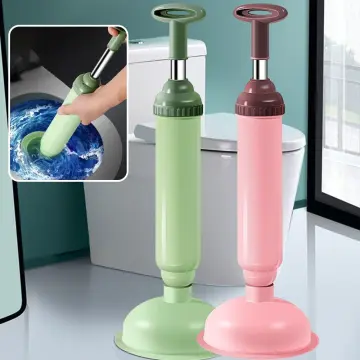Ways to Learn Plunger and Drain Cleaner: Professional Guidance
Ways to Learn Plunger and Drain Cleaner: Professional Guidance
Blog Article
The article author is making several great pointers about Here's How to Correctly Use a Toilet Plunger overall in this article just below.

Introduction
Appropriate upkeep of household drains pipes is important for avoiding obstructions and making certain smooth water flow. One of the secret tools in every homeowner's toolkit is the bettor, together with various drain cleansers made to tackle persistent clogs properly. This write-up checks out exactly how to use plungers and drain cleansers efficiently to keep your drains pipes flowing openly.
Section 1: Recognizing Bettors
Sorts of Plungers
There are a number of sorts of bettors readily available, each made for different kinds of drains pipes and clogs. One of the most usual types consist of cup plungers, flange plungers, and accordion bettors.
Just How Plungers Work
Plungers service the principle of creating stress and suction to displace blockages. When properly applied over a drain, they create a vacuum cleaner that can take out debris or break up blockages.
Selecting the Right Bettor
Selecting the right plunger depends upon the kind of drainpipe and the nature of the obstruction. Cup bettors are perfect for sinks and tubs, while flange bettors are better fit for bathrooms due to their style.
Common Mistakes with Plungers
Avoiding these blunders guarantees effective plunging: improper seal around the drainpipe, not enough force, and not clearing bordering debris.
Section 2: Utilizing Plungers Effectively
Preparation
Prior to plunging, guarantee the bettor covers the drain completely and develops a tight seal. Clear any kind of noticeable debris around the drainpipe opening.
Technique
Begin with mild plunging motions to build suction. Increase pressure slowly, utilizing a constant rhythm. Repeat as necessary up until the drainpipe clears.
Fixing Tips
If diving does not function, try adjusting the seal, applying petroleum jelly for a far better seal, or utilizing a various kind of plunger.
Area 3: Recognizing Drainpipe Cleansers
Types of Drain Cleaning Company
Drain pipes cleaners can be chemical or enzymatic. Chemical cleansers use solid chemicals to dissolve obstructions, while enzymatic cleaners utilize natural enzymes to break down organic matter.
Just How Drain Cleansers Work
Chemical cleaners respond with obstructions to liquify them, while enzymatic cleansers break down natural materials like hair and grease without hurting pipelines.
Security Considerations
Constantly wear handwear covers and eye protection when making use of chemical drainpipe cleansers. Guarantee sufficient ventilation and comply with producer directions meticulously.
Eco-Friendly Alternatives
Consider utilizing vinegar and cooking soft drink or enzyme-based cleaners for green choices that are safer for pipes and the atmosphere.
Area 4: Making Use Of Drain Cleaners Properly
Application Methods
Put chemical cleaners directly right into the drain opening. Allow them to work for the suggested time before flushing with hot water. Enzymatic cleansers ought to sit over night.
Safety measures
Prevent mixing different sorts of cleaners, as this can generate toxic fumes. Never make use of chemical cleansers along with a bettor, as splashing can happen.
Dealing With Stubborn Obstructions
For consistent clogs, take into consideration utilizing a pipes snake or calling an expert plumbing professional to stop damages to pipelines.
Final thought
In conclusion, recognizing exactly how to use bettors and drain cleansers properly is necessary for preserving healthy plumbing systems. By picking the right devices and strategies, property owners can take on small blockages and protect against major plumbing problems down the line.
How to Use a Plunger to Unclog a Drain
The humble plunger is a simple yet effective tool for breaking clogs in sinks, tubs and toilets. This handy tool is easy to use. You can make the most of its power if you understand how it works. Ready to dive in? Here’s what you need to know.
Safety First!
Never use a plunger with drain chemicals. Water will splash as you work, and the chemicals can spatter, burning skin and eyes. It’s a good idea to use rubber gloves and wear safety goggles when you work on a clog.
Choose the Right Tool for the Job
Plungers come in two different styles. Sinks, bathtubs and showers require a cup plunger. Like its name suggests, the rubber end is shaped like a cup. Use a flange plunger on toilets. These plungers have a rubber funnel extending from the cup. A plunger needs to be big enough to cover the drain.
Ready, Set, Plunge!
Coat the rim: Coat the plunger rim with petroleum jelly. This helps make a better seal.
Block outlets: Hold a wet rag over nearby outlets such as the overflow vent or the drain in a second sink.
Release air: Insert the plunger at an angle into the water. Water will displace air in the cup. A water-filled cup is more forceful than one filled with air.
Keep the plunger upright: Hold the plunger perpendicular to the drain. Use fast, forceful strokes, but make the first stroke gentle. The first stroke can create a splash if the cup still contains air. Thrust the plunger 15 to 20 times.
Snap off the plunger: The final stroke should be a strong upward motion that ends when the plunger snaps off the drain.
Repeat the process: you may need to repeat this sequence several times. When the water drains away, your work is done. High-five! https://plumbernw.com/blog/how-to-use-a-plunger-to-unclog-a-drain/

Application Methods
Put chemical cleaners directly right into the drain opening. Allow them to work for the suggested time before flushing with hot water. Enzymatic cleansers ought to sit over night.
Safety measures
Prevent mixing different sorts of cleaners, as this can generate toxic fumes. Never make use of chemical cleansers along with a bettor, as splashing can happen.
Dealing With Stubborn Obstructions
For consistent clogs, take into consideration utilizing a pipes snake or calling an expert plumbing professional to stop damages to pipelines.
Final thought
In conclusion, recognizing exactly how to use bettors and drain cleansers properly is necessary for preserving healthy plumbing systems. By picking the right devices and strategies, property owners can take on small blockages and protect against major plumbing problems down the line.
How to Use a Plunger to Unclog a Drain
The humble plunger is a simple yet effective tool for breaking clogs in sinks, tubs and toilets. This handy tool is easy to use. You can make the most of its power if you understand how it works. Ready to dive in? Here’s what you need to know.
Safety First!
Never use a plunger with drain chemicals. Water will splash as you work, and the chemicals can spatter, burning skin and eyes. It’s a good idea to use rubber gloves and wear safety goggles when you work on a clog.
Choose the Right Tool for the Job
Plungers come in two different styles. Sinks, bathtubs and showers require a cup plunger. Like its name suggests, the rubber end is shaped like a cup. Use a flange plunger on toilets. These plungers have a rubber funnel extending from the cup. A plunger needs to be big enough to cover the drain.
Ready, Set, Plunge!
Coat the rim: Coat the plunger rim with petroleum jelly. This helps make a better seal. Block outlets: Hold a wet rag over nearby outlets such as the overflow vent or the drain in a second sink. Release air: Insert the plunger at an angle into the water. Water will displace air in the cup. A water-filled cup is more forceful than one filled with air. Keep the plunger upright: Hold the plunger perpendicular to the drain. Use fast, forceful strokes, but make the first stroke gentle. The first stroke can create a splash if the cup still contains air. Thrust the plunger 15 to 20 times. Snap off the plunger: The final stroke should be a strong upward motion that ends when the plunger snaps off the drain. Repeat the process: you may need to repeat this sequence several times. When the water drains away, your work is done. High-five! https://plumbernw.com/blog/how-to-use-a-plunger-to-unclog-a-drain/

I stumbled upon that blog post about A Guide to Plungers (and How to Use Them) while scouting around the web. Sharing is good. Who knows, you will be doing someone a favor. Kudos for being here. Please visit our website back soon.
Call Today Report this page